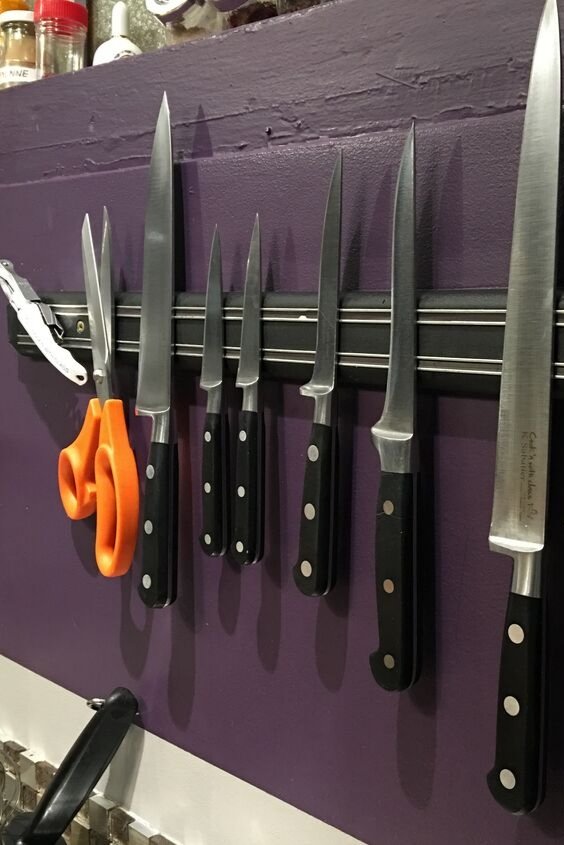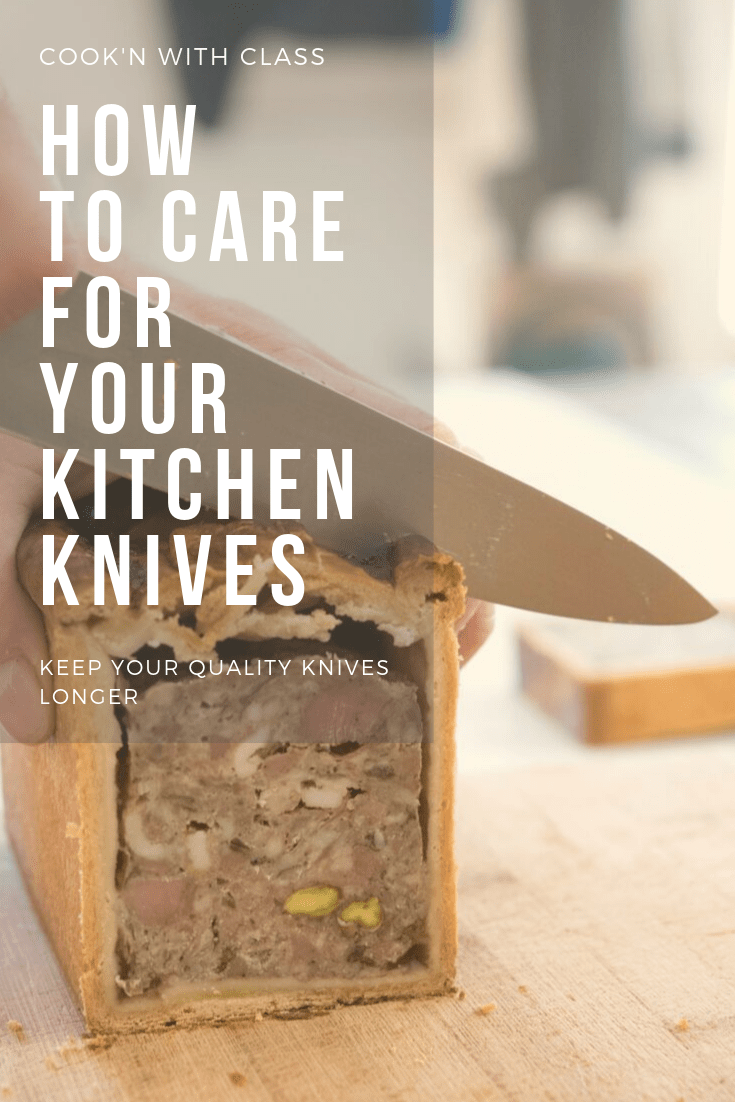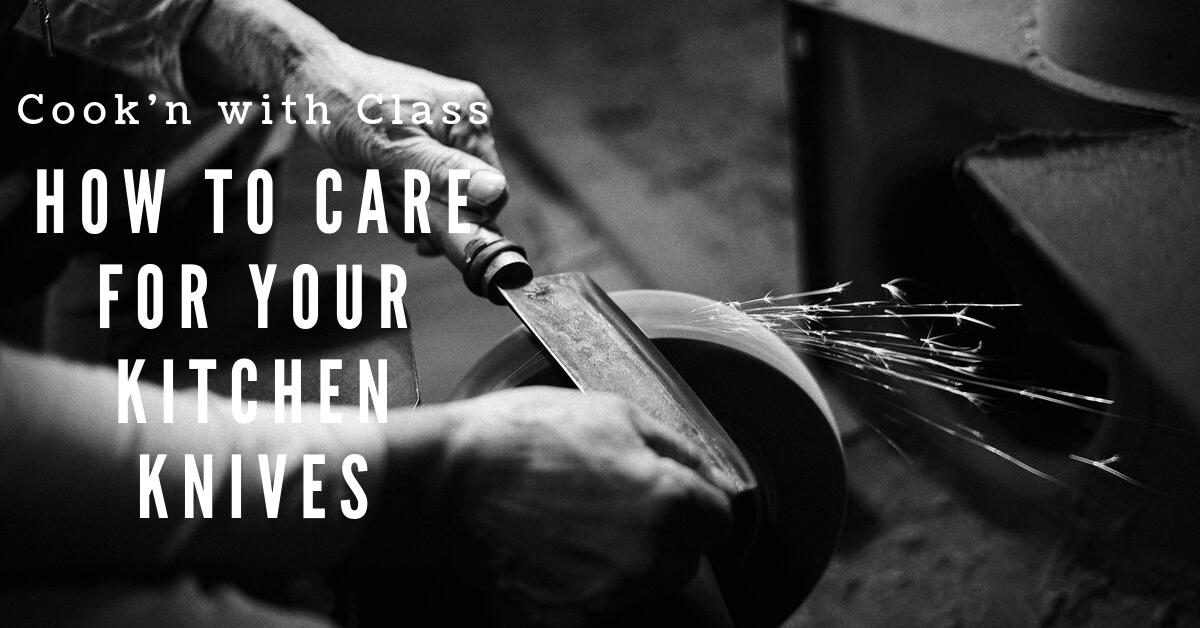
How to care for your kitchen knives
So, let me start by saying that you don’t need to have fancy equipment in your kitchen to be a great cook. But having the right tool for the job will make your life a lot easier. One tool that I think is probably the most important and sadly the most neglected in the average kitchen is the knives. No judgment, but are your kitchen knives just thrown into a drawer in disarray where they pose perhaps the biggest risk to your fingers? Even if you have only one knife (though I think you may need a few more), that you use for everything from slicing to dicing, how you treat those knives is extremely important. Knife care is something that often comes up in our French cooking classes in Paris. How often do you sharpen your knives, our chefs are asked? But we also get asked if we prefer one type of knife over another.
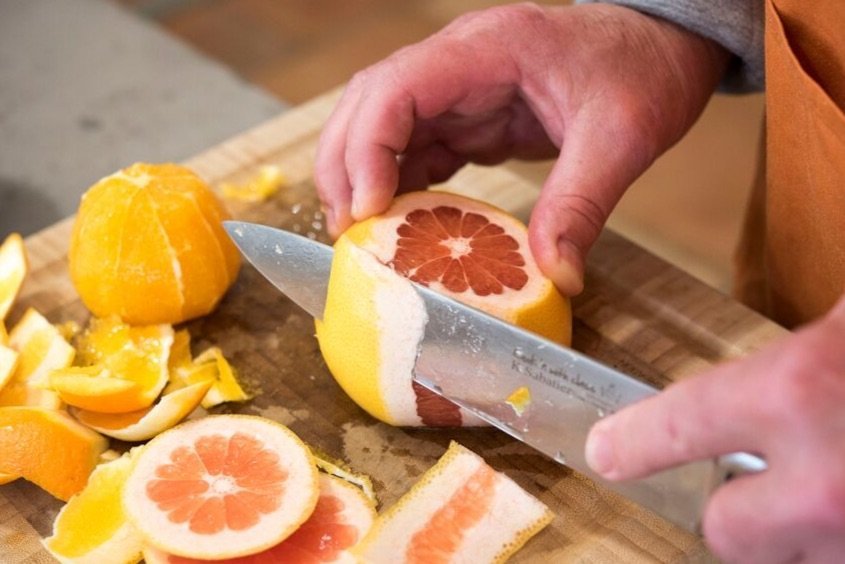
When I started my career, in 1981, as a young apprentice, the cooking school gave us a list of equipment that was needed for school but also for practicing in the kitchen. The list was short as quality Knives are expensive. We needed to have 5 knives:
a paring knife
a demi chef also called éminceur
a filet de sole
a désosseur
a peeler
All the knives needed to be from one knifemaker only. K Sabatier from Thiers, France in the Auvergne Rhône-Alpes. Yes, there were and are other good knives out there but we all had to have the same knives.
Since then, I have been faithful to Sabatier. When we opened the school in Paris in 2007, of course, it was Sabatier that I ordered for our cooking classes. Today even have them engraved and we sell them individually and as a kit in our boutiques in Paris.
K Sabatier – the K is the indicator of the brand created by Philippe Sabatier back in 19th century, is a historical knifemaker for more than 200 years and they have been copied many many times. To this day, these knives are still made in France and while the original method of fabrication has changed, the quality has not. You can read more about the story of Sabatier on their website where you can also order knives from them, but of course, if you want a little something to remember us by, why not pick one up in our schools after one of your French cooking lessons.
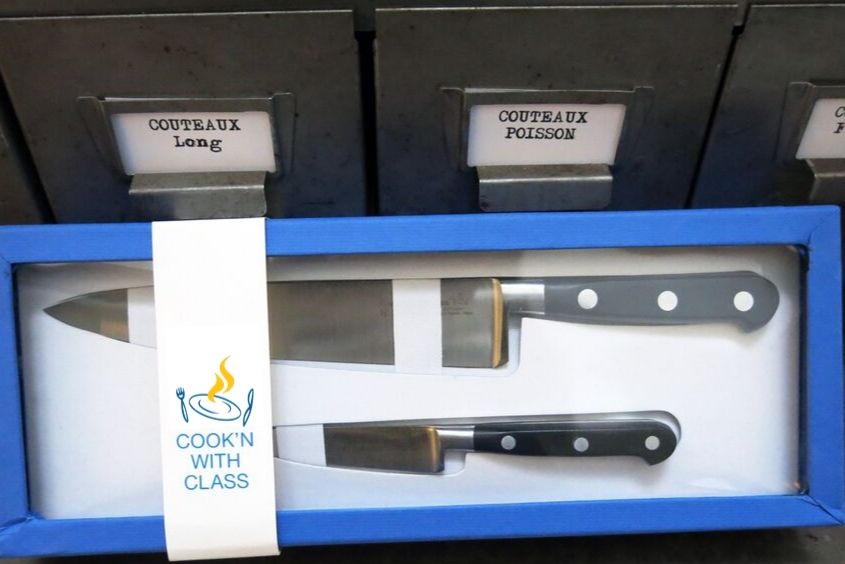
– – –
So now that you are the proud new owner of a good set of knives, how do you ensure that they stay with you for a long time? What are the best ways to care for your knives?
Knife care 101 – Knife care tips:
Cleaning
1) You would be surprised how much, how you wash your knives could affect knife care. Clean your knives with warm water and soap, using a sponge, and dry them with a rag right away.
Never use very hot water, no dishwasher, no soaking in the sink. Why? You are dulling the knife faster than you need to.
Storing
2) Knife care & knife storage should go hand in hand unless you want to cut your hand! Store your knives if possible on a rack (magnetic bar), accidents happen far more often where knives are stored in a drawer.

Keep them sharp
3) Knife care means staying sharp. If you really want to keep your knives sharp, you should use a stone (also known as a whetstone). Using a whetstone will eat up less of your knife when sharpening. Whetstones usually have two sides. Wet the stone before use by submerging it into the water for about 5 minutes. You need to keep the stone wet as you use it.
Place the stone on a cutting board or countertop, with the coarse grit face up. Place a wet paper towel underneath the stone to help keep it from sliding. Add a little bit of water on the stone, as needed. (2 TBS is enough). You don’t want the stone to go dry.
With one hand, grasp the knife by the handle and hold the edge of the knife against the stone, point-first, with the cutting edge meeting the stone at around a 22-degree angle. You can stabilize the blade with your other hand.
With moderate pressure, slide the blade forward and across the stone, covering the entire length of the blade and keeping the blade flush against the stone at a constant 22-degree angle.
Do this 10 times, then flip the knife over and give the other side of the blade 10 strokes on the stone.
Flip the stone over to the fine grit side and give each side of the blade 10 strokes.
Finish by using a sharpening steel, then rinse and wipe the blade dry to remove any metal particles.
You should only use a whetstone about once a month.

Hone your knife before each use
4) Your knife kit came with honing/sharpening steel. How does that help with knife care? You should hone your knives 2 or 3 times before each use with a Sharpening Steel to maintain the edge of your knives and extends the life of your cutlery.
Go the extra mile
5) If you use them a lot like every day have a professional doing it, twice a year. If you use it less, once a year is probably enough.
Traveling with your knives
6) If you’re headed for a friends’ house and he or she has not yet read this post, you may want to carry your own knives. This is not knife snobbery – sometimes it just can’t be helped. So if you do travel with your knives, you may want to invest in a snazzy knife bag to ensure that you keep them well protected for the road.
With all these great tips, you have no more excuses, go out, treat yourself to a good set of knives, and keep sharp!
Cook’n With Class Paris – Hands-on French Cook’n Classes taught in English by professional chefs. Since 2007.

